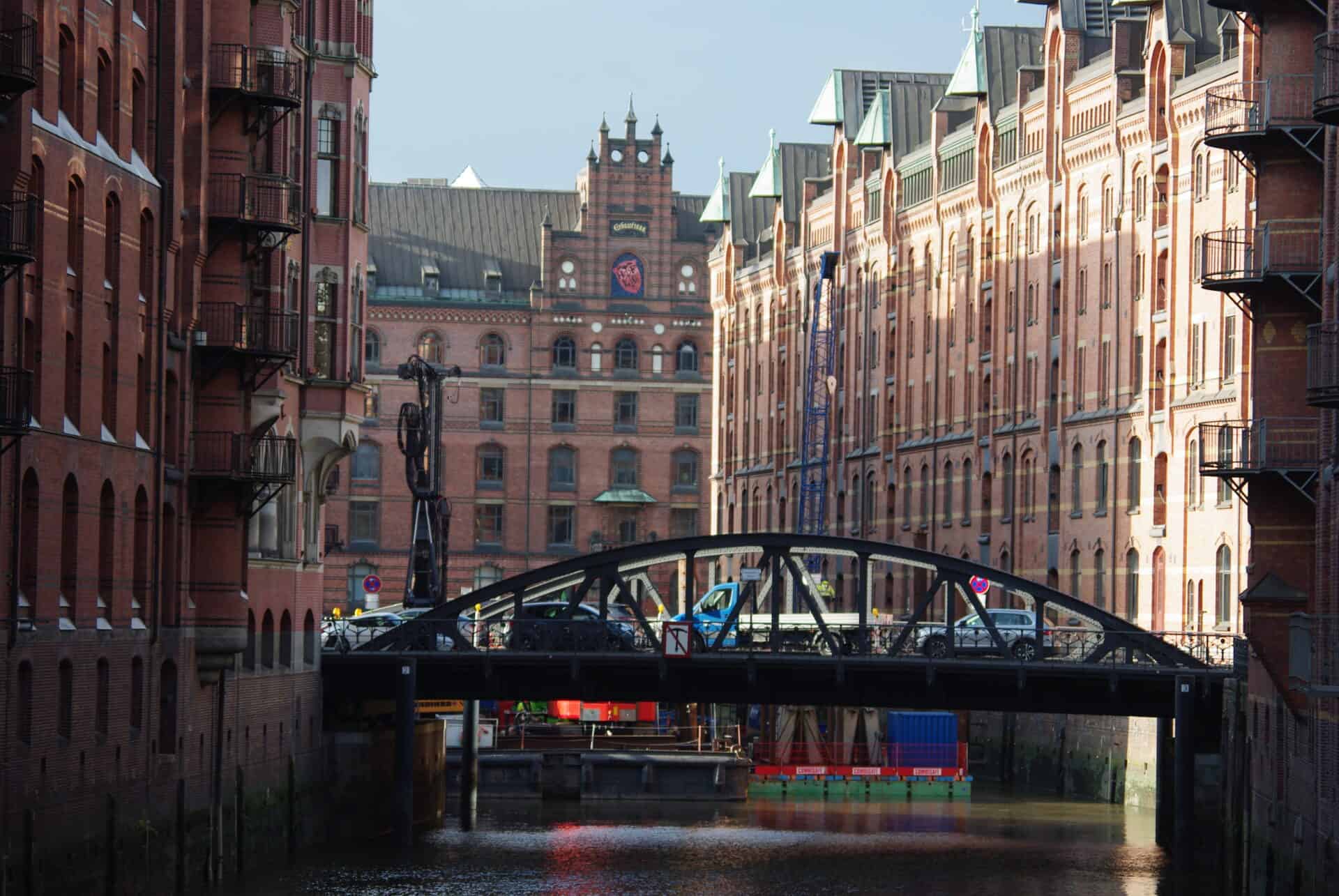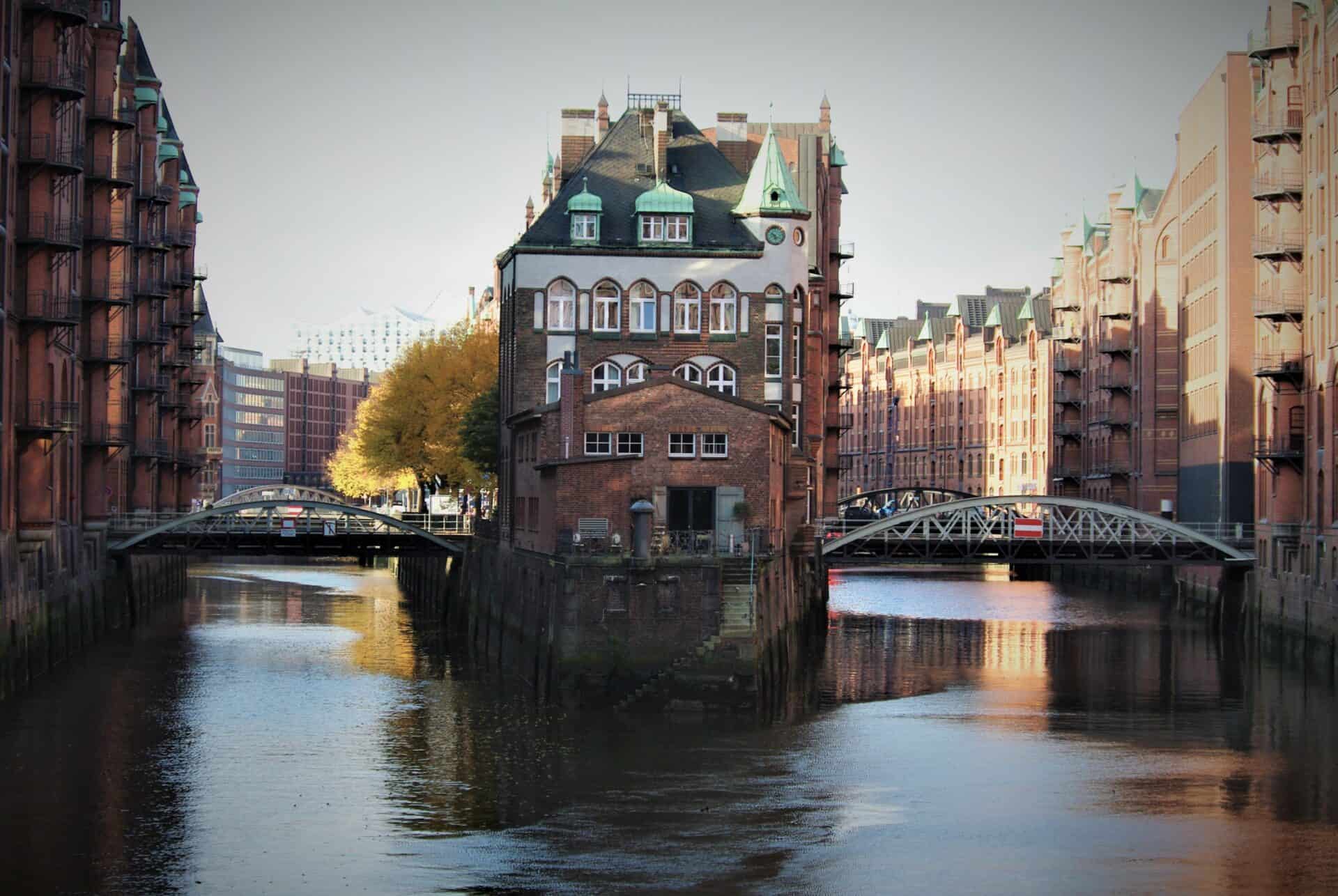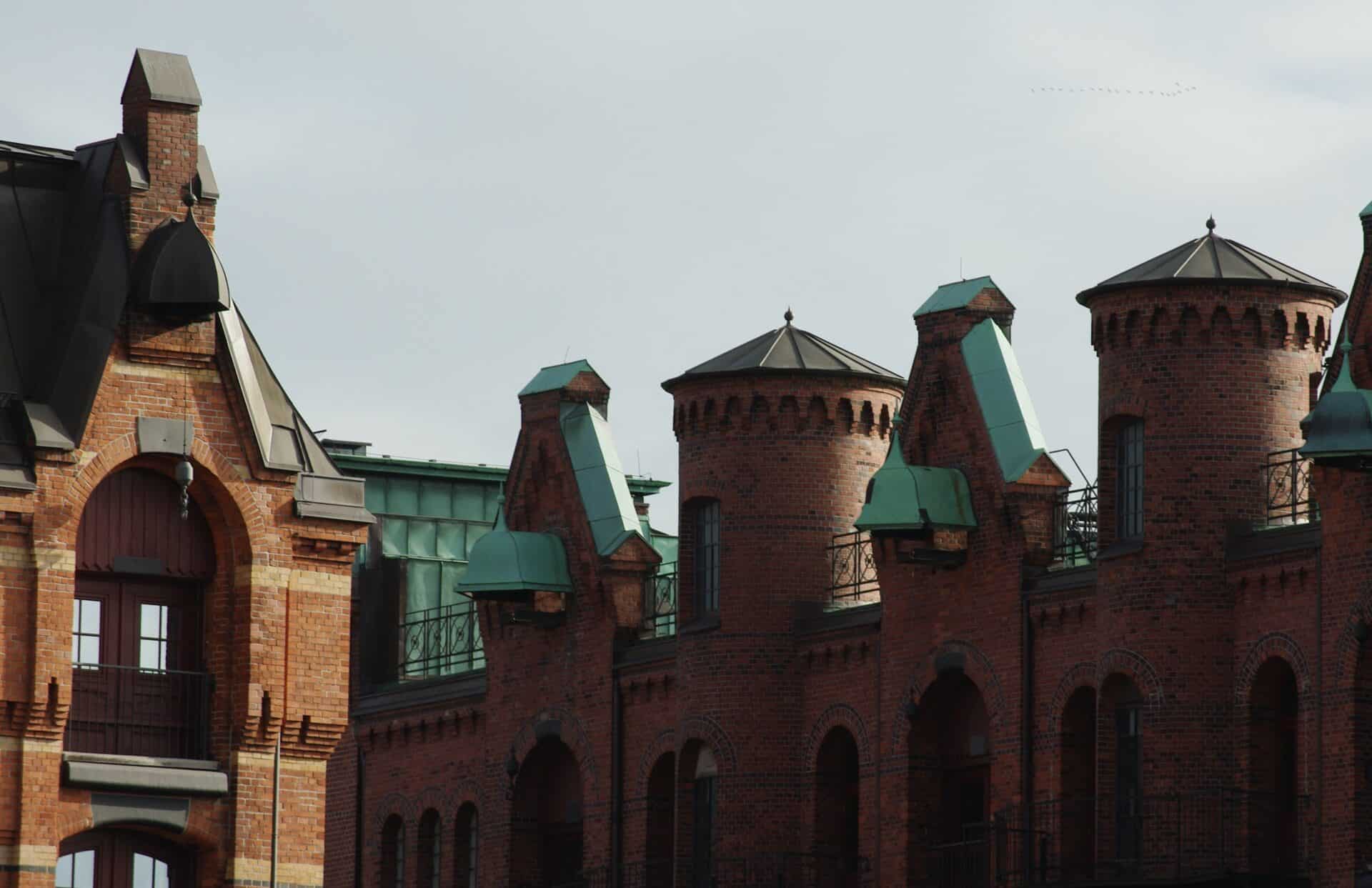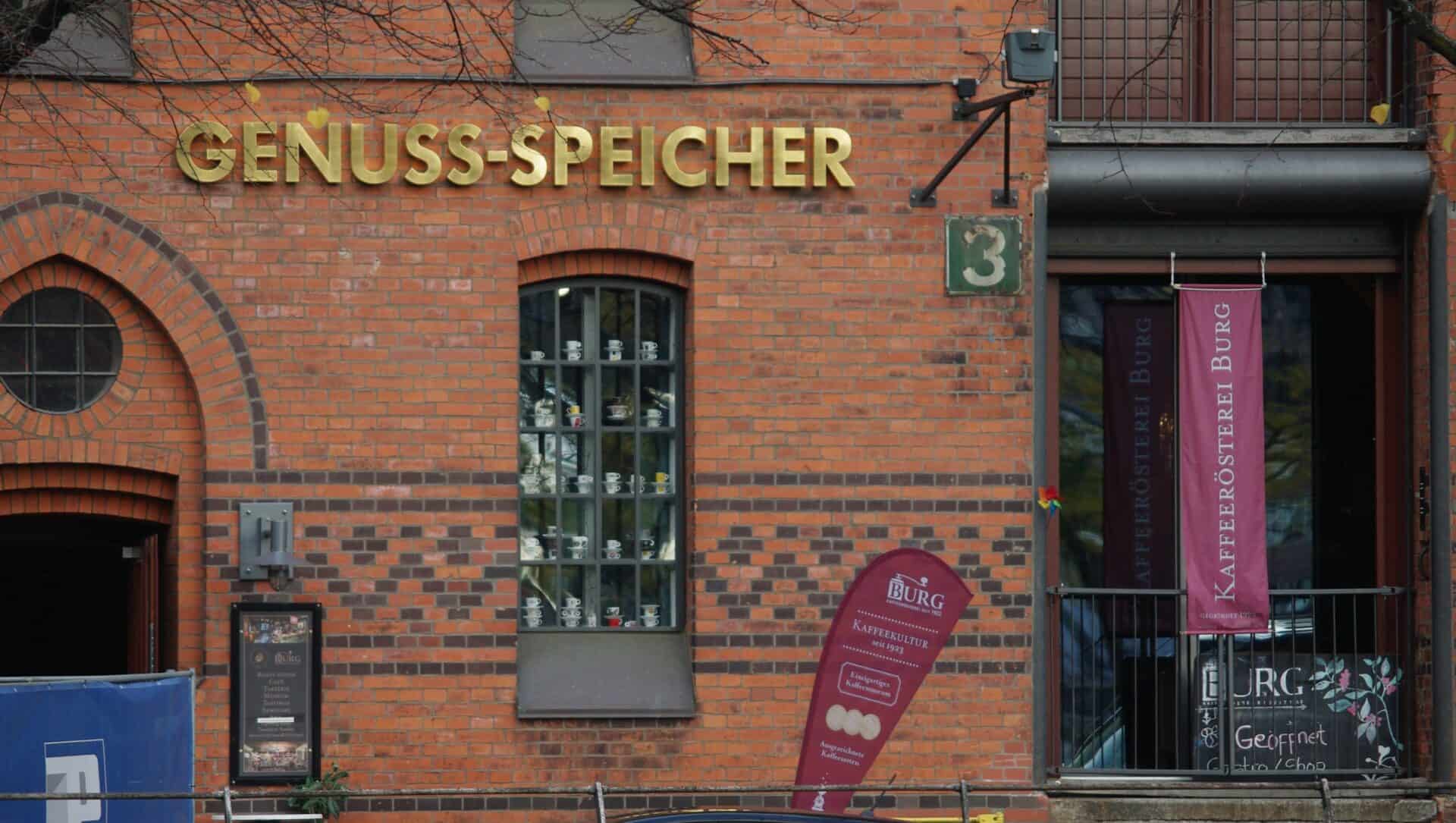Tour of the Speicherstadtt
A tour of the Speicherstadt with the Hamburg Greeters is not just an ordinary tour of the historic warehouses, but a journey into a uniquely different world. Imagine the cars have disappeared and suddenly you find yourself in the year 1888, when the majority of the warehouses were completed.
The Speicherstadt presents itself as a symphony of red brick. But it would be too easy to simply describe it as “red”: Each individual warehouse block captivates with its individual colouring and ornamentation. Even today, the Speicherstadt is still the largest contiguous warehouse complex in the world. Precious goods such as spices, tobacco, tea, coffee, cocoa and carpets used to be stored here.
Economic change has altered the picture. Other retailers and service providers have now moved in, including textile retailers, advertising agencies, photographers and IT companies. Demand for the warehouse space remains high. HHLA, the landlord (Hamburger Hafen- und Logistik AG, 70% state-owned), is helping to create a balanced mix of sectors. This has brought life back to the “red city”.
The famous Miniaturwunderland is also located here, as well as numerous museums, the Hamburg Dungeon, Dialogue in the Dark and many restaurants, including the “Wasserschloss”. Of course, there are also classic warehouse floors. In addition to a few tea merchants, over 50 carpet dealers are based here, most of them with long-standing Iranian company owners. After Iran, the Speicherstadt is home to the largest storage centre for oriental carpets in the world. Dealers from all over the world come to Hamburg to buy oriental carpets here.
Maritime tour among friends
Warehouse district construction
The area of today’s Speicherstadt has been within Hamburg’s city walls since the Thirty Years’ War and extended over the islands of Wandrahm, Brook and Kehrwieder. Around 1880, around 20,000 people lived here in a densely built-up neighbourhood with half-timbered houses.
Even after the foundation of the German Empire in 1871, Hamburg remained a foreign customs territory. However, Chancellor Bismarck urged Hamburg to join the customs union, for which Hamburg was granted a free harbour. However, as the merchants preferred to store their goods close to the city centre, it was decided to demolish the houses on the three islands. The construction of the Speicherstadt was thus associated with social injustice: The 20,000 residents were displaced without adequate replacement accommodation. The poorer residents found refuge in the corridor neighbourhoods of the Old and New Towns, which became social hotspots as a result. In 1892, a cholera epidemic broke out there due to unacceptable hygienic conditions.
The water castle
The moated castle in Dienerreihe is not just a restaurant, but is located in the former winchman’s house. For centuries, aristocrats were not allowed to acquire property in Hamburg, which is why there are no castles or palaces in the city. However, there is Bergedorf Castle, which served as the official residence of a non-noble bailiff who administered the district. For a long time, Hamburg was a “burgher” republic, whereby the right to have a say was mainly reserved for wealthy men, especially merchants. The rich merchants were mocked by the “common” people as “pepper bags”.
The winch keepers’ house was where the winch keepers lived so that they could quickly carry out repairs to the winches on the warehouses if necessary. The building is located in a prominent spot where two canals meet and is one of the most photographed buildings in the city. In addition to the restaurant, the building also houses an interesting tea shop, the Teekontor. Even if you’re not a tea drinker, it’s a pleasure to sniff the lids of the tea glasses.
By the way, the Teekontor is one of the filming locations for the popular children’s and youth television series „Die Pfefferkörner“.
Modern architecture 130 years ago
The warehouses were designed to meet the logistical requirements of their time. Each warehouse had a water side and a land side. The goods were delivered via the waterways, which were called canals, using barges, motorless open boats. These were either pulled by a tugboat or moved manually by the crew using peek hooks. Metal hooks were set into the walls of the warehouses at three different heights in order to cope with the tides. These historic hooks are still in place today.
Winches were also installed on the land side. The goods were transported from there using horse-drawn carts, the railway and lorries. The warehouses were built without heating, with the thick walls ensuring a constant temperature of 12 to 17 degrees Celsius. There was also a centralised electricity supply and the 1000 or so winches were operated using centrally generated hydraulics. Many of these historic winches still work today and have been converted to electricity. Carpet dealers in particular still use this winch system today.
Coffee trade in the Warehouse district
The history of the Speicherstadt is closely intertwined with the coffee trade. The renowned Burg coffee roastery is located in a special gourmet store at St. Annen Ufer 2. It’s worth a visit: you can watch coffee roasting live, taste 70 different types of coffee from the 70 countries where coffee is grown and explore the inside of an original store. There is also a cozy cafeteria where you can relax. All coffee lovers can also visit the coffee museum in the basement.
Very close to the Genuss-speicher is the former trading hall of the Hamburg Coffee Exchange, a post-war building. Although many parts of the Speicherstadt were destroyed in the war, many buildings were rebuilt true to the original or slightly modified. With a bit of luck, a tour of the stock exchange hall is possible, but it is often used as a hotel event room. The hall and an impressive glass picture showing coffee pickers in Costa Rica are listed buildings and are a gift from the state of Costa Rica to Hamburg.
Those who are brave can get from the stock exchange floor to the Hotel Ameron via a so-called “Bridge of Sighs” across Brooksfleet. The hotel is located in the former coffee merchants’ house. From there you can take a detour to Hafencity and follow the traces of the coffee trade: visit Sandtorpark and the Coffeeplaza there. The Neumann Group, the world’s largest coffee importer, is located in the round high-rise building. She is responsible for the world’s largest (“artificial”) coffee bean, which stands in the Plaza.
After a two to three hour tour, our Greet, the Speicherstadt tour of a different kind, ends.
All about "Greets"
- Duration: two to three hours and absolutely free
- Max. 6 people, no combination of different requests
- Meeting point and exact route: by agreement between guest and Greeter
- Request: please at least two weeks before desired date
- More about Greets




